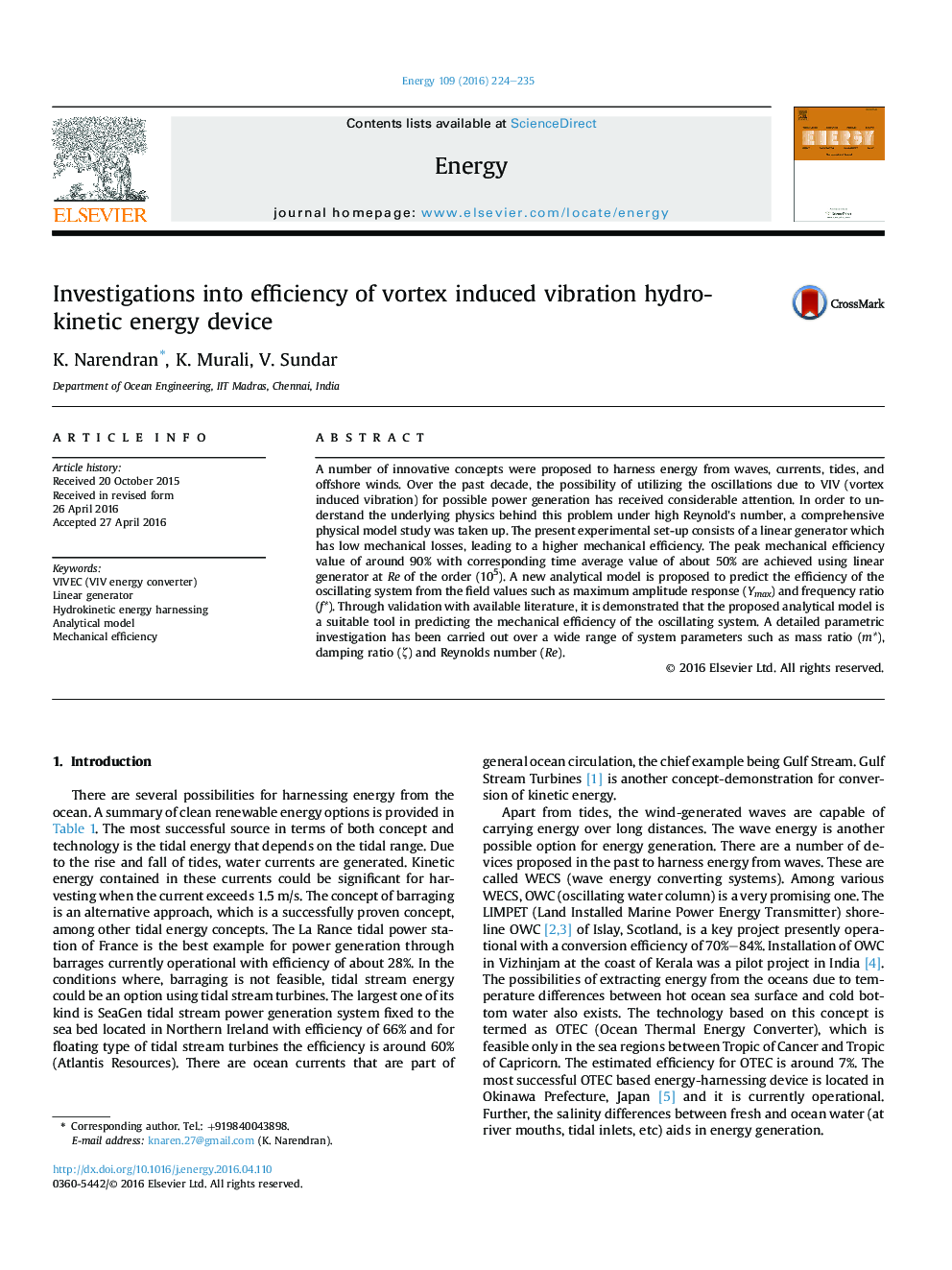| Article ID | Journal | Published Year | Pages | File Type |
|---|---|---|---|---|
| 8073443 | Energy | 2016 | 12 Pages |
Abstract
A number of innovative concepts were proposed to harness energy from waves, currents, tides, and offshore winds. Over the past decade, the possibility of utilizing the oscillations due to VIV (vortex induced vibration) for possible power generation has received considerable attention. In order to understand the underlying physics behind this problem under high Reynold's number, a comprehensive physical model study was taken up. The present experimental set-up consists of a linear generator which has low mechanical losses, leading to a higher mechanical efficiency. The peak mechanical efficiency value of around 90% with corresponding time average value of about 50% are achieved using linear generator at Re of the order (105). A new analytical model is proposed to predict the efficiency of the oscillating system from the field values such as maximum amplitude response (Ymax) and frequency ratio (f*). Through validation with available literature, it is demonstrated that the proposed analytical model is a suitable tool in predicting the mechanical efficiency of the oscillating system. A detailed parametric investigation has been carried out over a wide range of system parameters such as mass ratio (m*), damping ratio (ζ) and Reynolds number (Re).
Related Topics
Physical Sciences and Engineering
Energy
Energy (General)
Authors
K. Narendran, K. Murali, V. Sundar,
